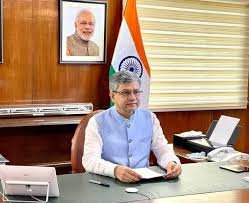Summary Points:
- India’s ECMS has received 70 applications within 15 days of its May 1 launch.
- 80% of the applications are from micro, small, and medium enterprises (MSMEs).
- The scheme aims to drive Rs 59,350 crore in private investment and Rs 4.56 lakh crore in production.
- Rs 22,805 crore has been allocated by the central government to support domestic electronics supply chains.
- Applications are open across four component categories, with rolling submissions for capital goods.
A Response That Surprised Even the Government
India’s latest electronics manufacturing scheme has struck a chord with industry players.
Launched on May 1, the Electronics Component Manufacturing Scheme (ECMS) received 70 applications in just 15 days, according to Union Minister for Electronics and IT, Ashwini Vaishnaw. What stood out: 80% of these came from MSMEs — a sign that the country’s smaller manufacturers are ready to scale.
The response suggests the program is already working as intended: creating incentives to manufacture more inside India rather than relying on global supply chains.
The Funding Behind the Push
Backed by a budget of Rs 22,805 crore, ECMS is designed to increase domestic output of critical electronic parts. Of the total funding:
- Rs 21,093 crore is earmarked for building sub-assemblies like camera modules and multilayer printed circuit boards.
- Rs 1,712 crore supports the development of parts and capital goods used in that assembly process.
The aim is to attract private investment of Rs 59,350 crore, and generate production worth Rs 4.56 lakh crore — while creating over 90,000 direct jobs.
Four Categories, One Manufacturing Vision
The scheme classifies components and assemblies into four distinct categories:
- Category A: High-value modules like smartphone camera systems and display units.
- Category B: Components including lithium-ion cells, PCBs, and enclosures for IT hardware.
- Category C: Items such as flexible PCBs and surface-mounted passive components.
- Category D: Machinery and tools used to manufacture goods under A, B, and C.
The application process is structured accordingly. Categories A to C have a 90-day window (closing July-end), while Category D — involving capital goods — accepts proposals over a two-year horizon.
MSMEs Step Up as Global Players Take Notice
Although no official list of applicants has been disclosed yet, industry insiders suggest major names — including Tata Electronics, Dixon Technologies, and Foxconn — are interested in participating.
But the real story is the MSMEs. By dominating early submissions, small firms are signaling that they see long-term viability in component manufacturing — and want a slice of India’s potential electronics export boom.
Toward an Electronics Manufacturing Hub
India imports a significant portion of the electronic components it uses. The ECMS is a step toward reversing that trend. Combined with other initiatives like the Production Linked Incentive (PLI) scheme and India Semiconductor Mission, the government hopes to build a resilient domestic electronics industry.



